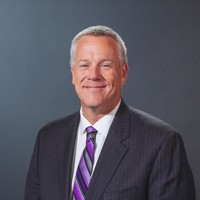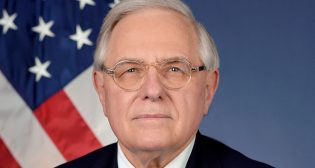
Amtrak Elevating Harris, Williams; Naparstek Retiring
Written by William C. Vantuono, Editor-in-Chief
Roger Harris becomes Amtrak President on July 5, reporting to CEO Stephen Gardner. Amtrak photo
Effective July 5, 2022, Amtrak has separated the President and Chief Executive Officer functions, promoting Chief Commercial Officer Roger Harris to President, reporting to Stephen Gardner, who will have the sole title of CEO. Additionally, Senior Vice President Service Delivery & Operations Gerhard (Gery) Williams will be elevated to Executive Vice President Service Delivery & Operations, succeeding Scot Naparstek, who is retiring.

Harris’ direct reports will be Williams; Dennis Newman, Executive Vice President, Strategy & Planning, and his current direct reports, while a new CCO is sought. Harris “will lead the coordination of the service delivery and operations, marketing, customer service, network planning, real estate and accessibility functions of the company,” Amtrak said. “He and his team will be dedicated to improving the delivery of Amtrak’s services and the experience it provides its customers and partners, while ensuring the integration of critical functions that market, sell, plan, design and deliver its services to our current and future customers.”
Harris has served as CCO in charge of marketing and revenue since April 2019. He is described as “a proven leader with more than 25 years of experience in the transportation industry, expertise across all commercial functions, and decades of collaboration with various operating functions to create field-tested product improvements built around the needs of customers.” Before joining Amtrak, he served as Senior Vice President of Revenue, Distribution & Alliances for Aeroméxico. Prior to Aeroméxico, Harris held executive roles in commercial and strategic functions at Delta Air Lines, Sun Country Airlines, GMAC Financial Services, Northwest Airlines and KLM Royal Dutch Airlines.
Williams is succeeding Scot Naparstek, who is retiring after 10 years with Amtrak, including serving as Executive Vice President, Service Delivery & Operations since January 2017, “where he successfully led Amtrak Operations through the many challenges of the COVID-19 pandemic while delivering major safety improvements, such as the implementation of Positive Train Control safety technology across the Amtrak network and the U.S. rail industry’s first FRA-approved Safety Management System,” Amtrak said.

Williams will be responsible for “leading the strategic development of Amtrak’s operating capabilities, including the transportation, mechanical, infrastructure, and customer service functions, as well as overseeing the day-to-day delivery and improvement of services to Amtrak customers onboard its trains and in its stations,” Amtrak noted. “He is a proven leader in the railroad industry, with more than 30 years of experience.” Williams joined Amtrak in June 2017 as Vice President and Chief Engineer responsible for the maintenance, construction and delivery of Amtrak’s railway infrastructure assets, including the Northeast Corridor. Prior to Amtrak, he held a wide range of senior leadership roles with CSX, including Vice President Mechanical, Chief Mechanical Officer, and AVP Network Operations – Locomotive Management. He has held his current position since January 2022.
“Amtrak has entered an exciting new era of growth and development, with more opportunities than ever before,” said Gardner. “The appointments of Roger to President and Gery to Executive Vice President of Service Delivery & Operations by our Board will help the company accelerate our progress in recovering, growing and transforming the business.”
“It is rather unusual, in and of itself, for the president of an organization to have a boss, other than the Board itself, in a governance role,” comments long-time passenger rail advocate and Railway Age Contributing Editor David Peter Alan. “Amtrak’s management structure has been somewhat confusing over the years, but not like this. It was widely thought that Stephen Gardner wished to consolidate the President and CEO positions, not split them again. Also, why would Amtrak have another “airline man” as president instead of somebody with strong railroad experience who might be able to get more respect from managers at host freight railroads? At a time when airlines are in public disfavor and business travelers are reducing their dependence on air travel, I would see this as a great opportunity for Amtrak to tout the benefits of rail travel, as opposed to air. It looks to me like Amtrak has missed a great opportunity. In a way, this brings us back to 1971, when Amtrak’s first president, Roger Lewis, came from the aerospace industry.”



